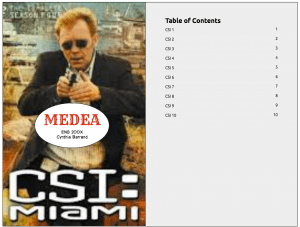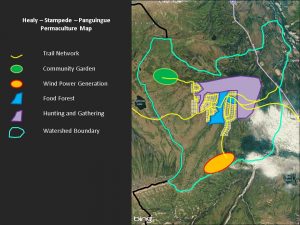Student Publication
Sharing understanding and connecting to a wider context
What is Student Publication?
We all want our students to effectively demonstrate the understandings we hope they obtain. Asking them to publish their work — essentially sharing it with an audience other than the instructor — can help motivate student effort and interest in an assignment, as publication makes it about more than a grade. When students publish, they can target conversations and audiences outside of but related to your course. The work of finding a conversation to enter is a learning experience in itself, and further, when student publication gets a response from outside your class, students get to see your course in context, as well as the real-world applicability of their own learning.
How Can I Use Student Publication in My Course?
Students find more opportunities to thrive when offered more ways to reflect on their learning, and more ways to provide evidence of their understanding. The multiplicity of publishing platforms available to students is greater than it has ever been. While there are opportunities for students to publish to traditional academic outlets — journals that accept student work — you can also make available more accessible options by building a simple publication space for your class (website, blog, Twitter hashtag) and/or identifying opportunities for local and social media publication.
Build student publication into your course by identifying an assignment whose outcome may be of interest/applicability to a broader audience. Alternatively, revise an assignment so that it has these qualities. In addition to an academic/disciplinary summary of their research, could students write a distillation of their findings for a public audience and send it to the “Community Perspectives” column at the Newsminer? Instead of a written report, could students create multimedia content and publish to a class blog?
Students at UAF are already publishing:
- weather data they observe, record, and interpret;
- speeches they deliver in their community;
- historical narratives using interactive timelines;
- infographics to represent complex data;
- ebooks;
- social media plans for a local businesses;
- findings from field necropsies;
- online portfolios;
- websites/edit sites for non-profits or friends;
- video, screencasts, and audio;
- book trailers (like movie-trailers);
- screencasts.
Questions and Considerations
Facilitating student publication means finding opportunities for publishing as well as helping students discover and set limits. Who might be interested in the content that students could publish? Based on that identified audience, where and what (form and content) should students try to create? You might ask yourself these questions as you develop an assignment. Or you may offer students an open assignment, and ask them to make these rhetorical considerations as they make choices about what they are creating.
There is some uncontrollable uncertainty to having students publish, as it makes the audience for their work at least in part unknown to you, and therefore unpredictable. This is both the thrill and the risk of student publication. Try to mobilize those unpredictables into teaching moments. Ask students: Why do you think that commenter responded that way? How and where could you build on the work you’ve already done, based on the response you’ve gotten?
Note that peers in the class might be your students’ most engaged and reliable audience. Encourage students to respond to each other’s publications — both from their perspectives as class peers as well as members of a public audience.
Technologies
Here are some suggested approaches to and tools for student publishing:
- Locating and storing domain knowledge by creating a Google Drive folder that contains pdfs, images and videos and then sharing that folder with you for evaluation and feedback on the quality of the items that were collected.
- Thinking critically about the existing body of knowledge and any newly gathered data by generating a mind map of how various concepts are linked together, creating a taxonomic map. Additionally, students can engage in the critical thinking process in well-constructed discussion boards.
- Using video or screencasting software like Screencast-O-Matic or Screencastify to capture audio and a visual representation about a topic rather than submitting a paper can engage students and keep them motivated.
- Adobe Spark, Explain Everything, and Prezi can be used to create digital stories or reports that include text, images and movies.
- Continuously adding to a journal or portfolio using a public blogging platform like WordPress or Google Sites can demonstrate student improvement over a semester. Publishing in the public makes students accountable for their work.
- Developing and presenting their work for a local public space, including local government boards (school boards) or meetings, university events and/or units (including funding applications or proposals to change a policy or practice)
- Using Twitter or Hypothes.is (group annotation tool) to enter a public conversation about a topic
In Practice

ENGL F200X
In this ENGL F200X course, this student uses Pixton, online comic software, to tell the Ancient Greek story of Medea ala CSI: Miami style.

Permaculture
Each of the modules in Introduction to Permaculture familiarized students with an additional layer of complexity to do with a space of their choice which they wanted to redesign as a permacultural utopia. The Final Project is a natural culmination of their study and reflection, peer-reviewed and finally posted onto their blogs, in the open, as a finalized game plan. The student whose stellar work is featured (and linked to) above is continuing to work on her space, even though the course has ended.
Watch:
Dr. Mary Beth Leigh talks about making art with biology students
Further Resources
Research Foundations
Fulton, J.S. (2018). Faculty Responsibilities with Publishing Student Work. Clinical Nurse Specialist. 32 (1) p. 5-6.
Ware, M. and Davis, S. (2002). Using Student Scholarship to Develop Student Research and Writing Skills. Teaching of Psychology. p. 151-154.
Wiley, E. and Chalker, D. (2016). A Community Model for Course-based Student Research That Advances Faculty Scholarship. Council of Undergraduate Research on the Web. p. 12-14.
